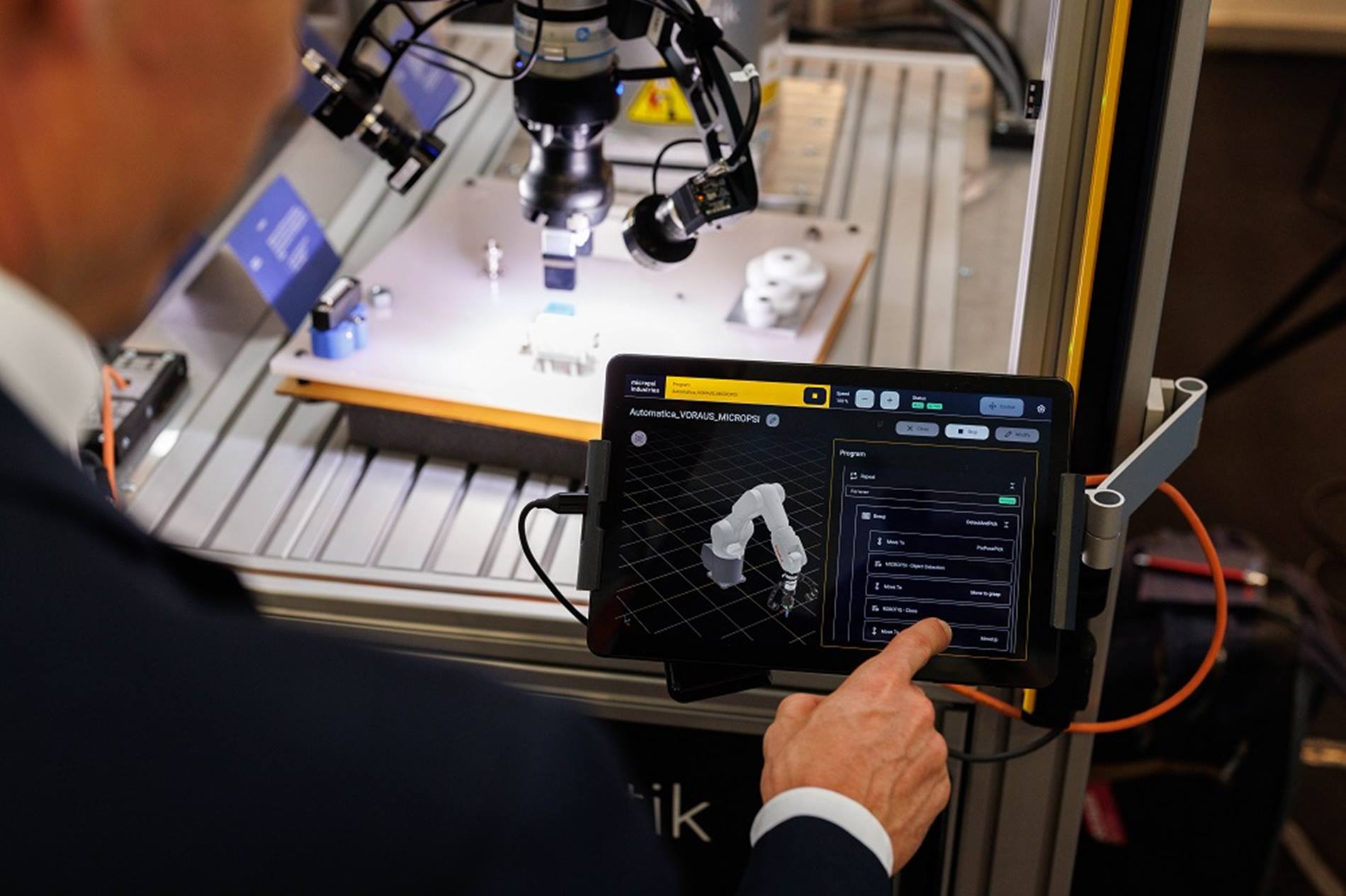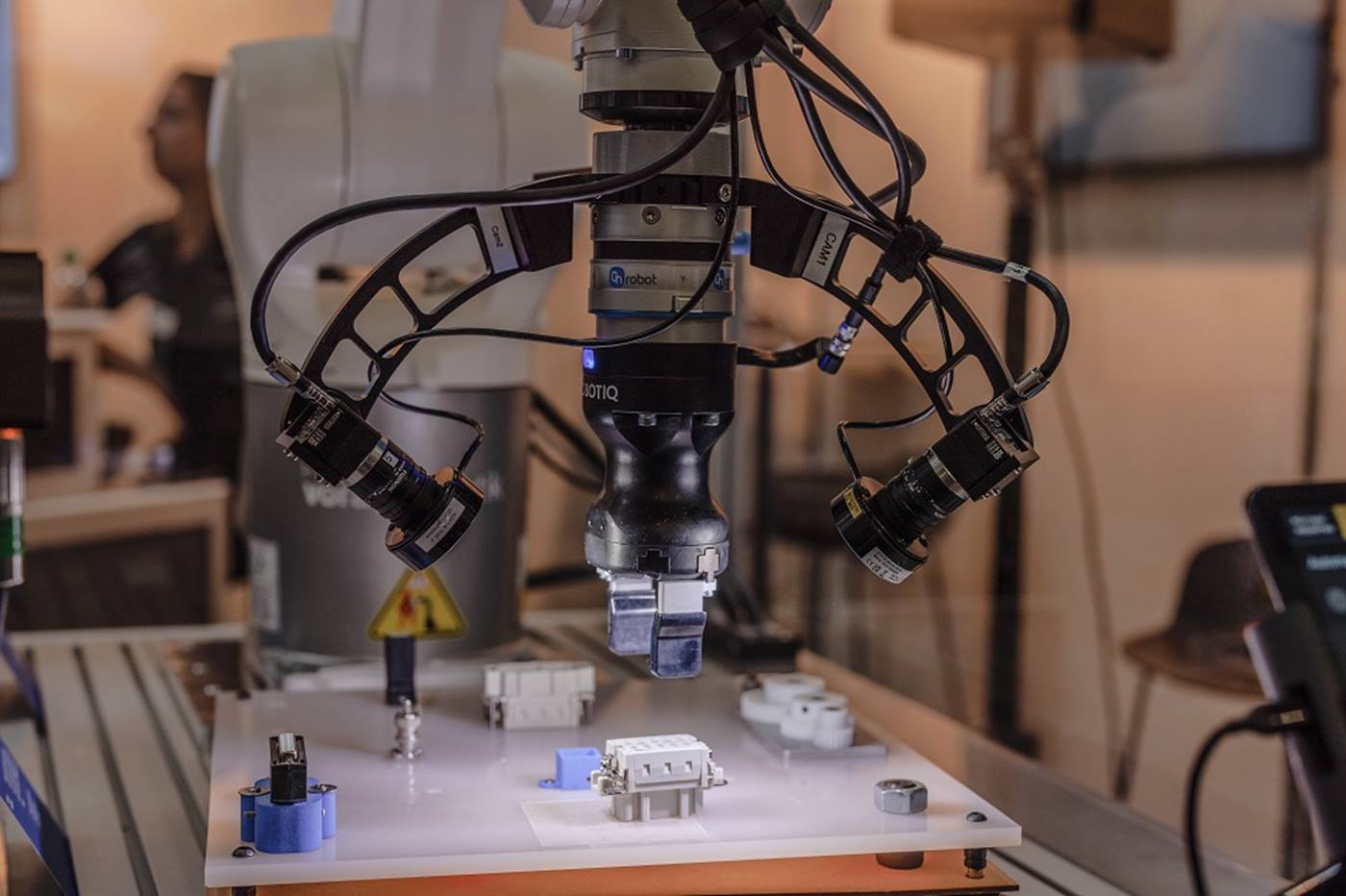If we want to insert a plug into a socket, we make relative, real-time, and relatively coarse movements toward the socket and correct the position as needed until the plug is in the socket. A similar strategy can be implemented in robotics since the advent of deep artificial neural networks. A neural network, effectively the nervous system of a machine, can be educated to understand the target without having to explicitly specify it. At automatica 2023 in Munich, Berlin-based AI specialist Micropsi Industries demonstrated how a KUKA robot controlled by MIRAI handles the demanding industrial process of plugging in electrical connectors.
MIRAI is an AI-based vision system capable of training an artificial neural network. "To enable a robot to pick up a bendable cable and plug it into a socket, users need to train the deep neural networks that reside in their MIRAI system. This process is simpler than it sounds," says Prof. Dominik Bösl, CTO of Micropsi Industries. End users set the robot's tool - in this example, the gripper - at the location in space where the tool belongs in relation to the item to be grasped during training. "Let's take the example of asking the robot to find the plug at the end of the cable. A simple 2D color camera attached to the robot's wrist provides a stream of images to the AI controller to show the robot where to go. In the process, the camera captures the target and its surroundings," Bösl continues.
Sufficient data in only 20 minutes
For perfect training of the neural network, the cable must be moved to show the robot different variances in the process. The gripper is then placed back in the correct position, the location is saved and the robot is moved around again. It is sufficient to repeat this process for 20 minutes to collect sufficient data.
Automate complex tasks profitably
"Thanks to AI-based vision technology and intelligent control, MIRAI makes robots so flexible that they can be used to implement even complex tasks that cannot be automated profitably or at all using classical programming," says Christian Felkel, Vice President Industry Management Electronics at KUKA. The possible applications of MIRAI are almost unlimited and are already being used in almost all manufacturing industries: from the highly automated automotive and electronics industries to the household appliance industry and medium-sized mechanical engineering companies. Concrete applications can be the precise gripping and insertion of cables or connectors, as occurs in end-of-line testing, the inspection of solder joints in the manufacturing process of cooling and air-conditioning technology, the placement of racks for galvanizing components or the handling of reflective or transparent components. "MIRAI gives our robots the eye-hand coordination and flexibility they need for all those processes where variance occurs - be it variance in position, shape, texture or lighting conditions," explains Felkel.












